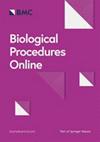开发用于新辅助治疗后病理肿瘤反应评估的可解释深度学习模型
IF 4.3
3区 生物学
Q1 BIOCHEMICAL RESEARCH METHODS
引用次数: 0
摘要
新辅助治疗后进行手术已成为局部晚期食管鳞状细胞癌(ESCC)的标准治疗方法,而准确的病理反应评估对于评估疗效至关重要。然而,病理反应评估可能很费力,不同观察者之间也可能出现不一致。因此,我们旨在开发一种可解释的深度学习模型,用于 ESCC 新辅助治疗后的高效病理反应评估。这项回顾性研究分析了复旦大学上海肿瘤防治中心浦东分院(队列1)2020-2021年的337例ESCC切除标本和浦西分院(队列2)2021-2022年的114例ESCC切除标本。这两个队列的整张切片图像(WSI)是使用不同的扫描仪生成的,以测试模型处理颜色变化的能力。四位病理学家独立评估病理反应。资深病理学家对 WSI 上的肿瘤床和残留肿瘤百分比进行注释,以确定共识标签。此外,还从队列 1 WSIs 中随机提取了 1850 个图像斑块,并对肿瘤存活率进行了二元分类。利用知识提炼技术开发的深度学习模型可自动对每个 WSI 的阳性斑块进行分类,并估算存活的残余肿瘤百分比。为模型解释和可视化输出了空间热图。该方法与病理学家的共识高度一致,R^2 为 0.8437,RAcc_0.1 为 0.7586,RAcc_0.3 为 0.9885,与两位资深病理学家(R^2 为 0.9202/0.9619,RAcc_0.1 为 8506/0.9425,RAcc_0.3 为 1.000/1.000),超过了两名初级病理学家(R^2 为 0.5592/0.5474,RAcc_0.1 为 0.5287/0.5287,RAcc_0.3 为 0.9080/0.9310)。可视化技术能够定位残留的存活肿瘤,从而加强显微镜评估。这项工作说明了深度学习在辅助病理反应评估方面的潜力。空间热图和斑块示例为模型预测提供了直观的解释,赢得了临床的信任和采用(一旦论文被有条件接受,将在 https://github.com/WinnieLaugh/ESCC_Percentage 上提供代码和数据)。整合可解释的计算病理学有助于提高肿瘤反应评估的效率和一致性,并有助于做出精确的肿瘤治疗决策。本文章由计算机程序翻译,如有差异,请以英文原文为准。
Development of an Interpretable Deep Learning Model for Pathological Tumor Response Assessment After Neoadjuvant Therapy
Neoadjuvant therapy followed by surgery has become the standard of care for locally advanced esophageal squamous cell carcinoma (ESCC) and accurate pathological response assessment is critical to assess the therapeutic efficacy. However, it can be laborious and inconsistency between different observers may occur. Hence, we aim to develop an interpretable deep-learning model for efficient pathological response assessment following neoadjuvant therapy in ESCC. This retrospective study analyzed 337 ESCC resection specimens from 2020–2021 at the Pudong-Branch (Cohort 1) and 114 from 2021–2022 at the Puxi-Branch (External Cohort 2) of Fudan University Shanghai Cancer Center. Whole slide images (WSIs) from these two cohorts were generated using different scanning machines to test the ability of the model in handling color variations. Four pathologists independently assessed the pathological response. The senior pathologists annotated tumor beds and residual tumor percentages on WSIs to determine consensus labels. Furthermore, 1850 image patches were randomly extracted from Cohort 1 WSIs and binarily classified for tumor viability. A deep-learning model employing knowledge distillation was developed to automatically classify positive patches for each WSI and estimate the viable residual tumor percentages. Spatial heatmaps were output for model explanations and visualizations. The approach achieved high concordance with pathologist consensus, with an R^2 of 0.8437, a RAcc_0.1 of 0.7586, a RAcc_0.3 of 0.9885, which were comparable to two senior pathologists (R^2 of 0.9202/0.9619, RAcc_0.1 of 8506/0.9425, RAcc_0.3 of 1.000/1.000) and surpassing two junior pathologists (R^2 of 0.5592/0.5474, RAcc_0.1 of 0.5287/0.5287, RAcc_0.3 of 0.9080/0.9310). Visualizations enabled the localization of residual viable tumor to augment microscopic assessment. This work illustrates deep learning's potential for assisting pathological response assessment. Spatial heatmaps and patch examples provide intuitive explanations of model predictions, engendering clinical trust and adoption (Code and data will be available at https://github.com/WinnieLaugh/ESCC_Percentage once the paper has been conditionally accepted). Integrating interpretable computational pathology could help enhance the efficiency and consistency of tumor response assessment and empower precise oncology treatment decisions.
求助全文
通过发布文献求助,成功后即可免费获取论文全文。
去求助
来源期刊

Biological Procedures Online
生物-生化研究方法
CiteScore
10.50
自引率
0.00%
发文量
16
审稿时长
>12 weeks
期刊介绍:
iological Procedures Online publishes articles that improve access to techniques and methods in the medical and biological sciences.
We are also interested in short but important research discoveries, such as new animal disease models.
Topics of interest include, but are not limited to:
Reports of new research techniques and applications of existing techniques
Technical analyses of research techniques and published reports
Validity analyses of research methods and approaches to judging the validity of research reports
Application of common research methods
Reviews of existing techniques
Novel/important product information
Biological Procedures Online places emphasis on multidisciplinary approaches that integrate methodologies from medicine, biology, chemistry, imaging, engineering, bioinformatics, computer science, and systems analysis.
 求助内容:
求助内容: 应助结果提醒方式:
应助结果提醒方式:


